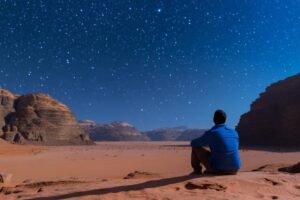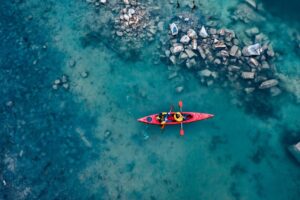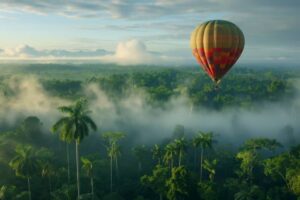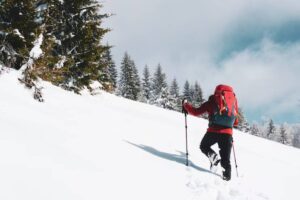The Travel Blog
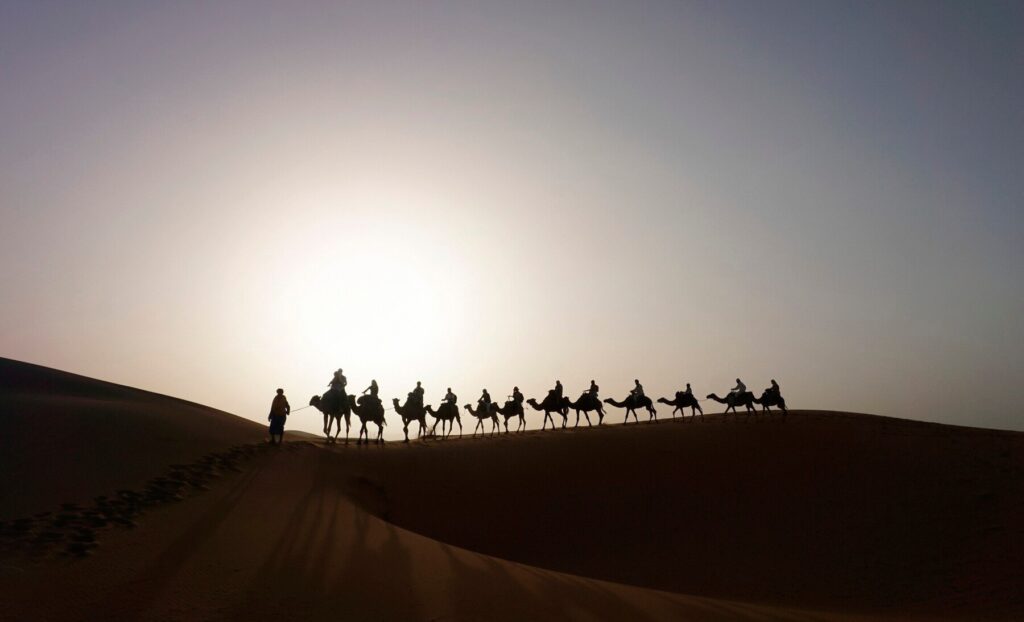
Camel Trekking in the Sahara: A Journey Through the Dunes
Step Into the Sands of Time
Imagine the gentle sway of a camel beneath you, the golden dunes stretching endlessly in every direction, and nothing but the rhythmic crunch of hooves breaking the desert silence. That’s the essence of camel trekking in the Sahara — a travel experience that feels as ancient as time itself.
This isn’t your typical holiday. Desert expeditions in Morocco combine breathtaking landscapes, rich Berber traditions, and a powerful sense of stillness. Whether you’re yearning to disconnect from digital noise or fulfil a dream of crossing the world’s largest hot desert, this is a journey that transforms you.
In this guide, you’ll discover everything from what to expect, where to go, what to pack, and how to do it responsibly. We’ll include real traveller stories, local insights, and two valuable interlinked resources to help you plan an unforgettable traditional desert travel experience.
Why Camel Trekking in the Sahara Is Unlike Anything Else
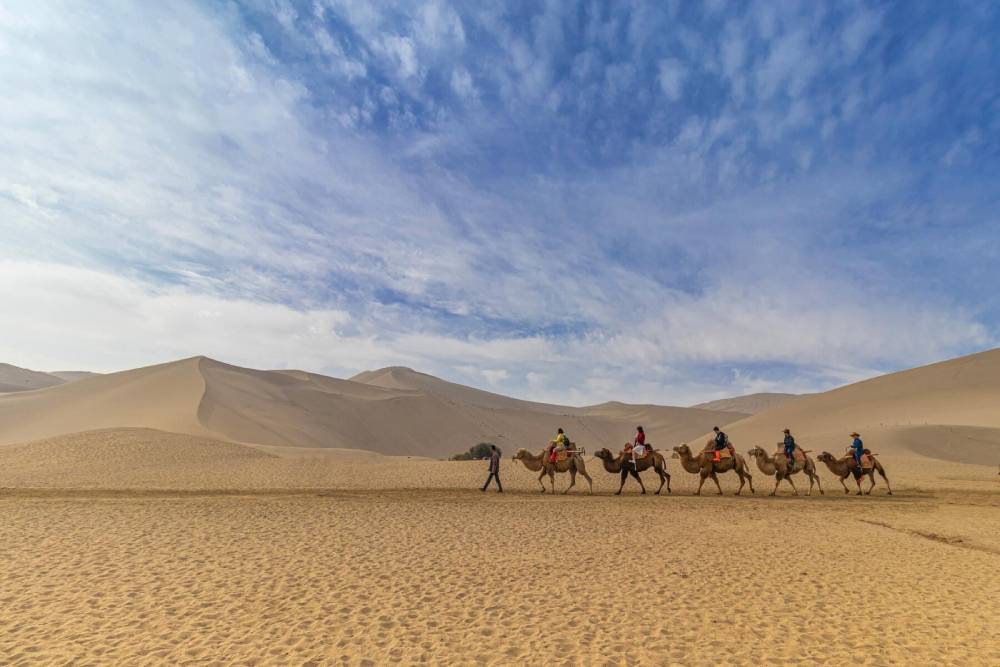
A Heritage That Stretches Back Millennia
Camels — known as “ships of the desert” — have carried people, goods, and stories across the Sahara for centuries. Trekking by camel isn’t just practical; it’s symbolic. It connects you to nomadic life, the rhythm of nature, and a slower pace that modern travel often forgets.
A Landscape That Humbles You
From towering dunes to fossil-filled plateaus, the Sahara’s terrain changes with the wind.
You’ll witness:
- Vast stretches of golden Erg Chebbi and Erg Chigaga dunes
- Dramatic desert sunsets that ignite the sky
- Star-filled night skies completely untouched by light pollution
It’s nature in its purest, most poetic form.
Top Routes for Camel Trekking in Morocco
1. Erg Chebbi – The Most Accessible Dunes
Near the town of Merzouga, Erg Chebbi is famous for its picture-perfect dunes and accessibility.
- Duration: 1–3 day treks
- Ideal for: Beginners, families
- Highlights: Sunrise treks, sandboarding, luxury desert camps
2. Erg Chigaga – Remote and Rugged
Less touristy and far more remote, Erg Chigaga offers a deeper, more immersive desert experience.
- Duration: 3–5 day treks
- Ideal for: Adventure travellers
- Highlights: Nomadic encounters, vast solitude, off-grid camping
3. Draa Valley – Oasis Meets Dunes
Combine palm-lined oases with gentle dunes in this lesser-known but culturally rich route.
- Duration: 2–4 days
- Ideal for: Culture-focused travellers
- Highlights: Berber villages, kasbahs, and oasis camping
Anecdote: The Night I Lost My Fear of the Dark
On my first night in the Sahara, I was nervous. The darkness was absolute. No phones, no Wi-Fi, no city glow — just stars, shadows, and silence.
I lay on a mat outside the camp, bundled in blankets, watching the sky shift. I saw shooting stars. I heard distant jackals. And for the first time in years, I felt completely still. That night, I didn’t just sleep under the stars — I made peace with the dark.
What to Expect on a Camel Trek
1. The Ride
Camel riding isn’t smooth like a horse — it’s a sway, a rhythm. You’ll adjust quickly, though the first hour might leave your thighs burning.
2. The Camps
Most treks include overnight stays in traditional Berber tents.
Expect:
- Mattresses on the sand
- Communal dining with tagine meals
- Campfires and traditional drumming under the stars
3. The Companions
Your group may include fellow travellers, a local guide, and camel handlers (often called “camel men”) — many of whom are Berber nomads.
Camels are incredibly well-trained, but always follow your guide’s instructions for mounting and dismounting.
What to Pack for the Sahara
Clothing
- Loose, breathable long-sleeved tops and trousers
- Lightweight scarf or shemagh (great for sun and sand)
- Sunhat and sunglasses
- Thermal layers for chilly nights
Essentials
- Reusable water bottle (minimum 2L per day)
- Headlamp or torch (nights are pitch black)
- Biodegradable wipes
- Power bank or solar charger
- Toilet paper and ziplock waste bags
Tip: No need for heavy hiking boots — sturdy trainers or closed sandals work fine on sand.
Health & Safety in the Desert
Stay Hydrated
The desert dehydrates you faster than you think. Drink small amounts regularly.
Sun Protection
Apply high SPF sunscreen every morning, and reapply to your face and neck during breaks.
Watch for Heat Stroke
Know the signs: dizziness, confusion, headache. Take breaks in the shade and don’t overexert.
Camel Etiquette
Never approach a resting camel from behind. Avoid loud noises and sudden movements. Always mount/dismount with help.
Respecting the Culture and Environment
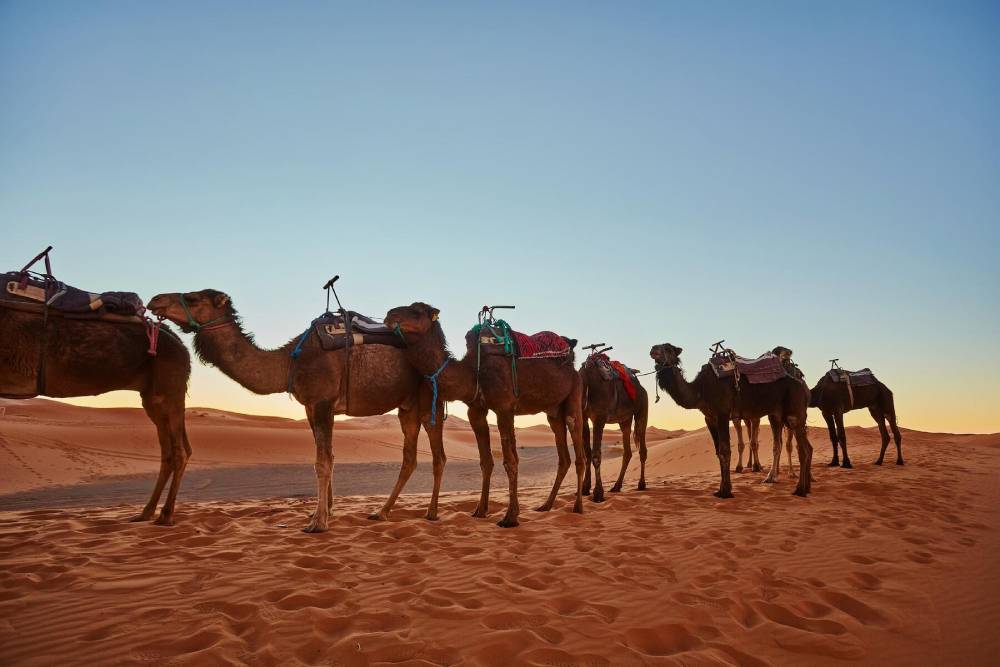
Desert Etiquette
- Greet your guides with “Salam Alaikum” (peace be upon you)
- Remove your shoes before entering communal tents
- Dress modestly, even in the heat
Environmental Care
- Leave no trace — take your waste with you
- Avoid disposable plastic
- Don’t collect sand or rocks as souvenirs
For more sustainability advice, check out: How to Pack for Multi-Climate Adventure Trips.
When to Go Camel Trekking in the Sahara
| Season | Months | Pros | Cons |
|---|---|---|---|
| Spring | March–May | Wildflowers, warm days | Sandstorms possible in April |
| Autumn | Sept–Nov | Best weather, mild temperatures | Peak tourist season |
| Winter | Dec–Feb | Crisp air, starry nights | Very cold at night |
| Summer | June–Aug | Few crowds | Dangerous heat, avoid unless acclimatised |
Best time of day for trekking? Sunrise or late afternoon — cooler air and golden light.
Where to Start Your Trek
Merzouga (for Erg Chebbi)
Fly into Errachidia or take a long scenic drive from Marrakech (8–9 hours).
M’Hamid (for Erg Chigaga)
More remote — accessible via Zagora. Recommended for seasoned travellers.
Ouarzazate
The “door of the desert,” Ouarzazate, is a great cultural stopover before your journey begins.
Operators & Booking Tips
Recommended Operators
- Sahara Desert Kingdom – eco-conscious with customisable itineraries
- Cameltrekking Morocco – family-run, great for authentic experiences
- Berber Camp Merzouga – popular among photographers and stargazers
What to Look For:
- Experienced local guides
- Ethical treatment of camels
- Small group sizes
- Clear itinerary and inclusions
Pair Your Trek with These Add-Ons
- Hot Air Balloon over the Atlas Mountains
- Visit Aït Benhaddou – UNESCO-listed ksar
- Explore Todra Gorge – perfect for post-trek cooling off
- Try sandboarding down a dune in Merzouga
Want to combine camel trekking with budget-conscious planning? Read: How to Plan an Adventure Sports Trip on a Budget.
Photography Tips for the Dunes
- Use a polarising filter to deepen skies and define dunes
- Shoot at golden hour for best light
- Protect your gear from sand with ziplock bags or dry sacks
- Capture silhouettes at sunset for epic minimalism
Conclusion: A Journey That Moves You Slowly and Deeply
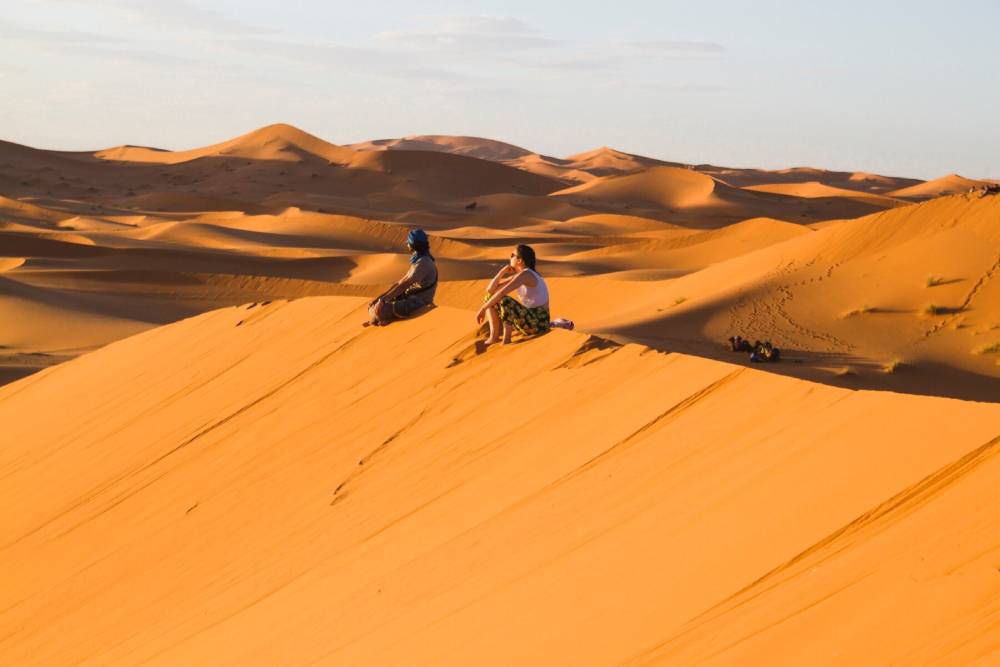
Camel trekking in the Sahara isn’t about speed. It’s about slowing down — to the rhythm of your camel’s gait, the wind across the dunes, the ancient stories whispered by your guide under the stars.
It’s a rare kind of travel that strips things back. No Wi-Fi. No noise. Just sun, sand, stories, and silence. Whether you ride for a day or a week, the Sahara leaves its mark — not on your passport, but on your perspective.
Ready to Ride Into the Desert’s Heart?
Embrace the adventure. Pack wisely. Respect the land. Have you trekked the Sahara? Share your experience or questions below! Subscribe for more immersive desert expeditions and cultural adventures from around the globe.



